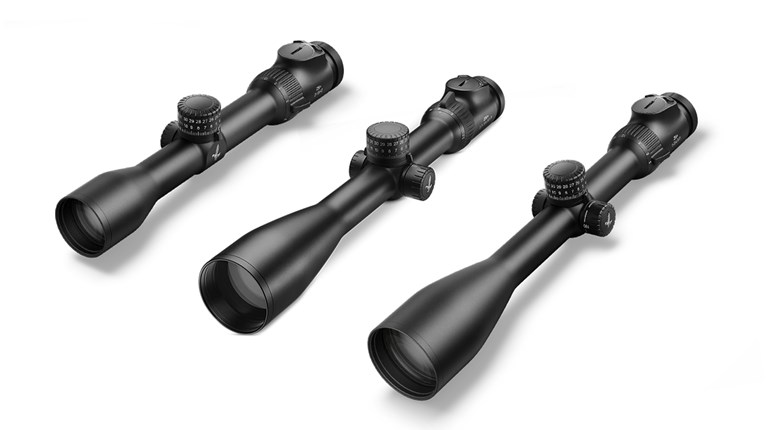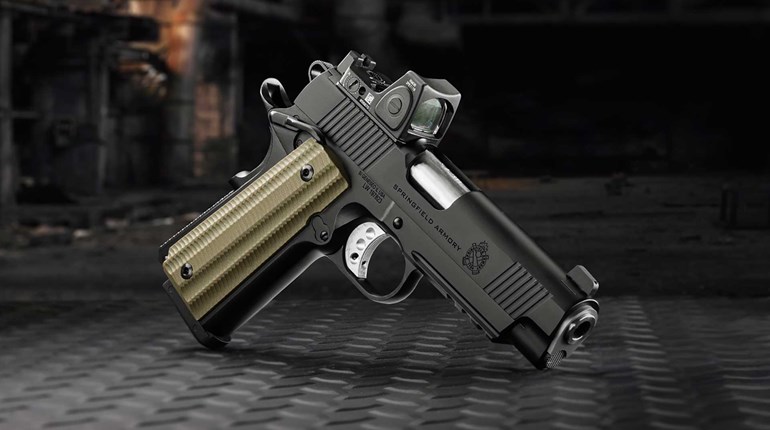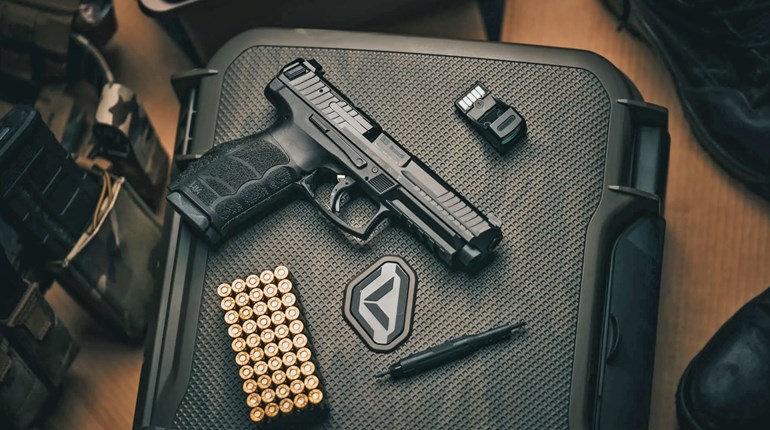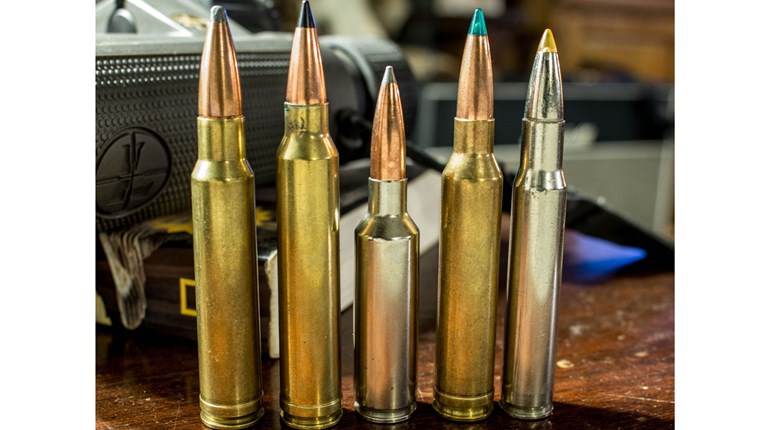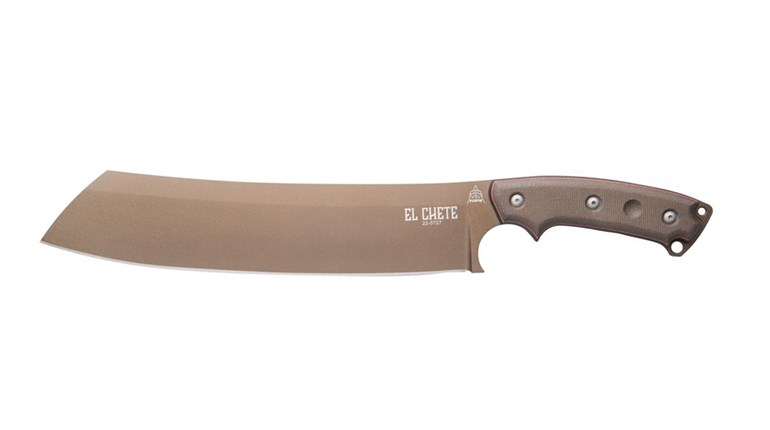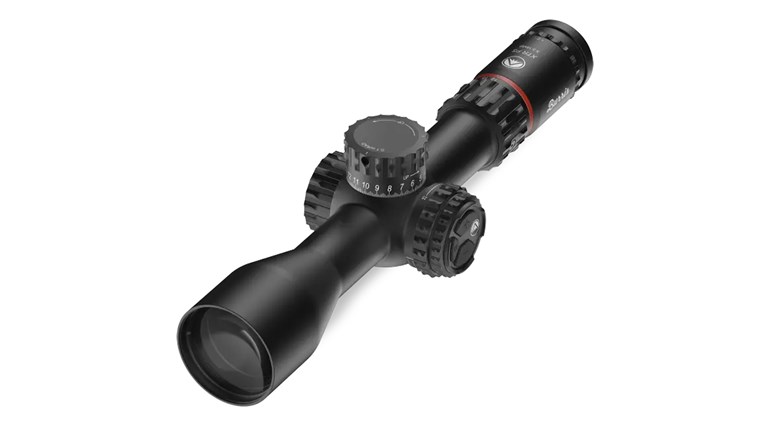
The Gen4 Glock G40 MOS is an optic-ready, long-slide pistol chambered in 10 mm. This one is equipped with a Trijicon RMR sight.
Most of us try to improve our abilities throughout our lives. In an increasingly dangerous world, nowhere is this more important than in honing our ability to protect ourselves and our loved ones. I focus my self-defense skill-development efforts on handgun proficiency, both for concealed carry and home defense. Having a concealed-carry permit suggests that one minimize the bulk and weight of the pistol carried for ease of concealment, but the home-defense scenario imposes no such restraints on firearm choice.
Handgun optics allow shooters to extend the ranges at which they can shoot with precision and speed. Optics, whether on pistols or rifles, eliminate the problem of trying to simultaneously focus on three things at different distances, i.e. the target, the front sight and the rear sight. The optic presents an in-focus dot (or crosshair in a scope) that you simply place on the intended target. Like many things designed to improve our lives, this is neither a magic all-encompassing solution, nor is it free. As always, its usefulness depends on being able to master it, and whether it works for us in our daily lifestyle.
For those who have never used optics on a handgun, take the cardboard inner core of a paper towel roll, hold it up close to your dominant eye and, looking through it, find an object across the room—pretty easy, particularly if you’ve used scoped rifles. Now, holding the cardboard tube at arm’s length (like a handgun), raise it to eye level and find that same object. Did it take much longer to find the target? Maybe not, but was the time differential enough that it could have changed the outcome of a life-or-death situation? Admittedly, red-dot optics don’t have the long tube of a riflescope or your paper towel core, but if it isn’t aligned perfectly with your eye and the target, the dot simply isn’t visible.
So if it’s that difficult on a square range (and possibly dangerous in a street confrontation), why are professional shooters using optics in handgun competitions, and how are they able to get on target so quickly? In a word, repetition. While you and I don’t practice/train as much as the pros, you’ll find that after a reasonable number of practice presentations, your draw stroke will finish with the pistol pointing at the target, or at least sufficiently aligned such that the red dot is visible in the optic window and you can quickly place it on target.
I obtained a Smith & Wesson M&P9L Pro Series C.O.R.E. equipped with a Trijicon RMR and a Glock G34 Gen4 MOS configuration with a Leupold DeltaPoint. C.O.R.E. stands for Combat Optic Ready Equipment, and MOS stands for Modular Optic System. While I’ve used both optics, I have never attended a defensive-training class where I used an optic-equipped pistol. However, I have been through Gunsite’s 250 Defensive Pistol Classes using both Glocks and M&Ps. Therefore, I’m familiar with both guns and the two different optics, but not with their combined use in a defensive scenario.
On the first presentation of each gun from leather, some pluses and minuses were immediately obvious when the pistols reached eye level. The dots were not visible looking through the optic housing. That was because both pistols were pointing slightly high, something I do with conventional pistol sights that allows me to acquire the front sight as the gun is coming to eye level and then drop the front sight slightly to the target’s center mass. Not seeing the dot was disconcerting for about a second, until I realized the conventional front sight was visible through the optic window, as was the rear sight located behind the base of the sight’s housing. Lowering the front sight toward the rear-sight notch (something that’s a trained part of my presentation) immediately brought the dot down into view through the window and allowed me to place it on target. Actually, at ranges inside of 10 yards—having done a lot of shooting with iron sights—I would have indexed the front sight on target and pressed the trigger without worrying about the dot’s exact location.
Both the Glock and M&P have a recessed area on top of the slide for mounting the adaptor plate that’s appropriate for your chosen optic. The extra-tall “iron sights” on the M&P C.O.R.E. co-witness with the scope, which is good insurance against a broken, dead or malfunctioning optic.
Progress came quickly when presenting the gun from a holster and, to a lesser degree, when drawing the pistol from the Hornady vault on my bedside talk. In both of these cases, the pistol grip is presented uncluttered for you to achieve a reasonable firing grip with your shooting hand, and the holster (or vault) holds the pistol steady as you achieve that grip. This is not the case if your pistol is lying on a hard, flat surface like a dresser or night stand, or worse, inside a cluttered drawer.
Under these circumstances, you do not have clear access to the grip frame, and the gun is likely to move around or slide across the surface as you try to wrap your hand around it. It’s unlikely you’ll come up with your hand properly holding the gun and ready to shoot. Without a proper grip you might have some serious difficulty finding the red dot (or even the front sight) when you bring the gun to eye level. Regardless of whether we have optics or conventional sights, we need to practice getting a home-defense pistol into action, perhaps even more than we practice presentations from leather on the range.
So far, I haven’t convinced myself to put optics on a concealed-carry pistol, but that’s mainly because I live in a warm climate where concealment becomes more difficult with increased handgun size. But for home defense, anything that fits inside the Hornady bedside vault is fair game, particularly since home invasions usually take place after dark. In this scenario, the red dot is more easily seen than conventional sights.
In low-light or no-light engagements, you need something that demands your visual focus, and whether it’s a glowing conventional front sight or a red-dot optic, you need to practice with it until you acquire it instantly. When your life’s on the line, you don’t want to be playing hide and seek with a critical accessory on your handgun.












